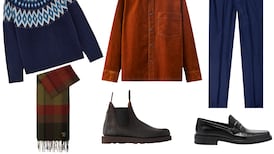Tucked into a hollow in the Dublin mountains in Piperstown lies the home of Nóirín Pye, one of the country’s legendary weavers, now in her 80s. Though she no longer works a loom, she sparkles as she recalls her early days growing up in Dalkey in a big, close-knit family who encouraged her talents and her career as a textile designer who reinvigorated one of Ireland’s most enduring handcrafts.
At the age of 21 she opened The Weaver’s Shed in a former paint store in Duke Lane in Dublin with her brother Loughlin (Lockie). Its cottage-like interior with cobbled floors housed the most richly textured, multicoloured tweeds in the country. Customers came from far and wide including Jackie Kennedy, the fashion designers Irene Gilbert, Sybil Connolly and Clodagh, and even the writer Brendan Behan. “He was a hoot,” Pye recalls with a smile.
She also remembers spending weeks weaving fabric for the then young rising star, artist Louis Le Brocquy, to his very exact specifications, and Maeve Hillary buying tweed for a suit to wear for her husband’s inauguration as president of Ireland. “I was a bit mad with colour at the time – and those [bolder] colours would often sell easier and attract more interest,” she says with a chuckle.
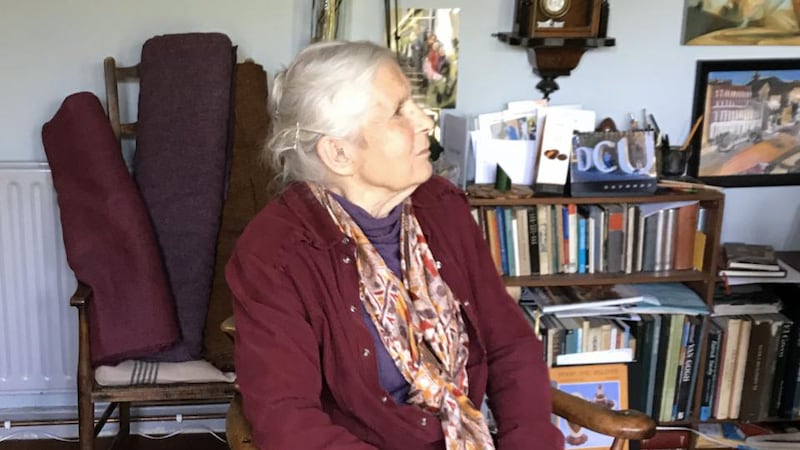
One of eight children of a civil engineer, she began weaving at the age of 12 on a little loom made for her by her brother Colm. She recalls “making little crioses in the kitchen while my mother prepared the food”. Later, Colm, then working in Shannon as an engineering mechanic, bought a fly shuttle handloom in Ennis, took it apart, marked every connection and sent it to her in Dalkey where three of her other brothers put it back together. And off she shuttled.
At this stage, her talent being obvious, she went to study weaving at the recently established course at the college of art (now NCAD) with the celebrated Lillias Mitchell. “Weaving at the time was only barely moving as an alternative to knitting,” she says. At 19 she completed a summer course at Galashiels in Scotland, famous for its tweeds and tartans, where she was the only female on the course and learnt more about the technical aspects of the craft. Further education came from a Donegal weaver Douglas McNeilis, who would cycle out to Dalkey from Dublin to help develop her skills.
Her exceptional sense of colour was very much intuitive. “Growing up in Dalkey, I was surrounded by beauty and what my father and mother had created. The light was always changing and up the hill you would be overcome by green and then the grey of the rocks. I was kind of disgusted at the time that tweed was so dull. It was always greys and browns and worn in suits for confirmations.”
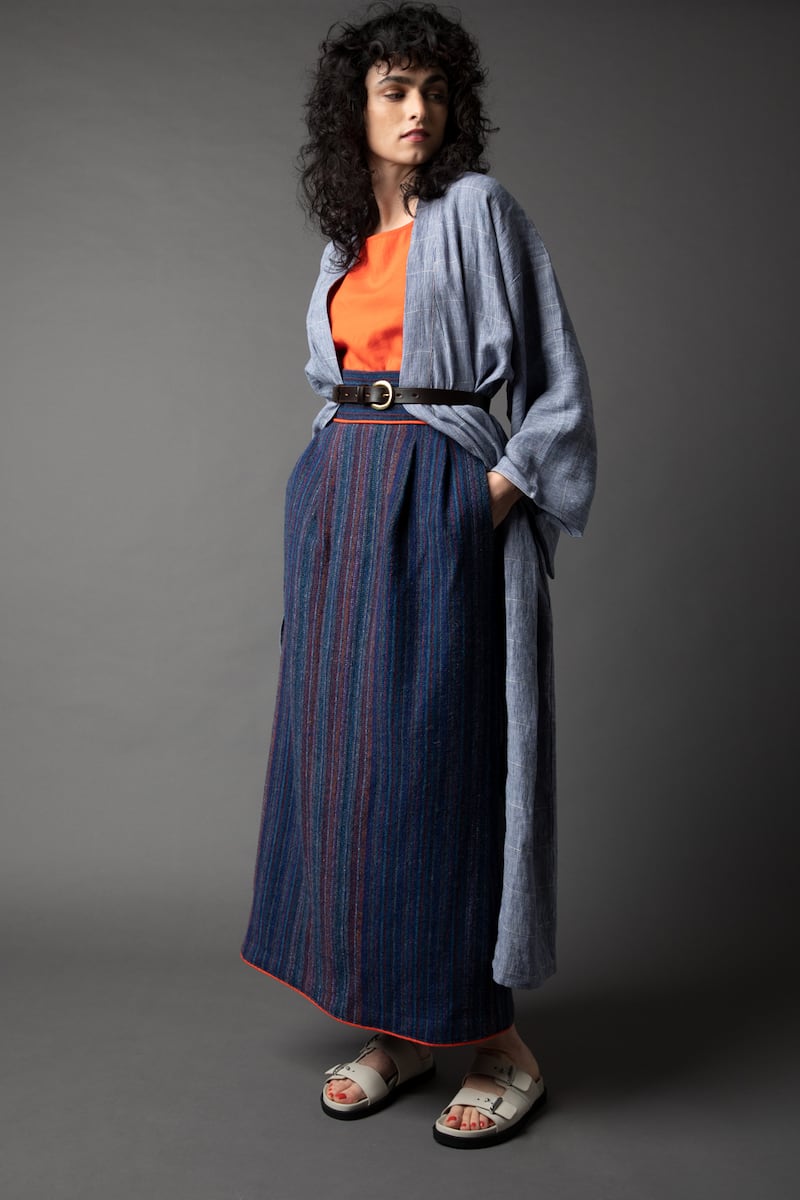
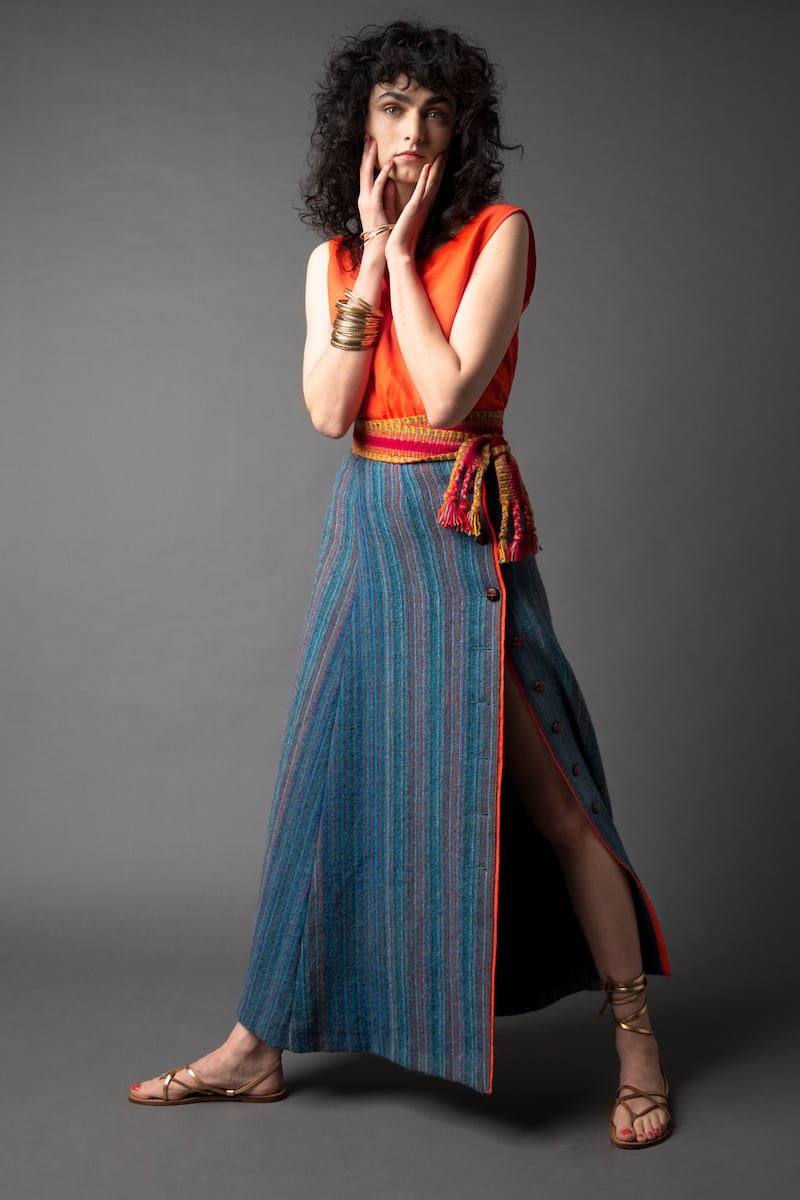
Her tweeds combined delicate and more daring combinations of shades and variegated stripes and her designs look as fresh and appealing today as they did 40 years ago. There are combinations of blues, ambers, reds and greens and others a restful mix of pale greys, cream, pinks, blues – as many as seven different yarns in one piece. She still retains a store of these vintage fabrics.
How did she combine the colours so successfully? “I would take the yarns one by one, wrap them around my finger and look at them in the daylight and decide on the mix and see how it would look in the end. I would never let anyone else make the warp, because it was so important.” Her great skill was also anticipating how shades would change when the oils necessary for twisting the yarn, were removed.
The cloth of which she is most proud is called Moscow and is a mix of pinks, purples and blue tones. It was a substantial order for curtains and upholstery specially made for the Irish Embassy in the Russian capital. Some remaining fabric covers her dining chairs and, 40 years later, still looks modern. Much of her yarn came from Hills, the well-known mills in Lucan where she managed to persuade “old man Hills” to let her have his leftovers, “so I filled sacks of yarn from there”, she says with a grin.
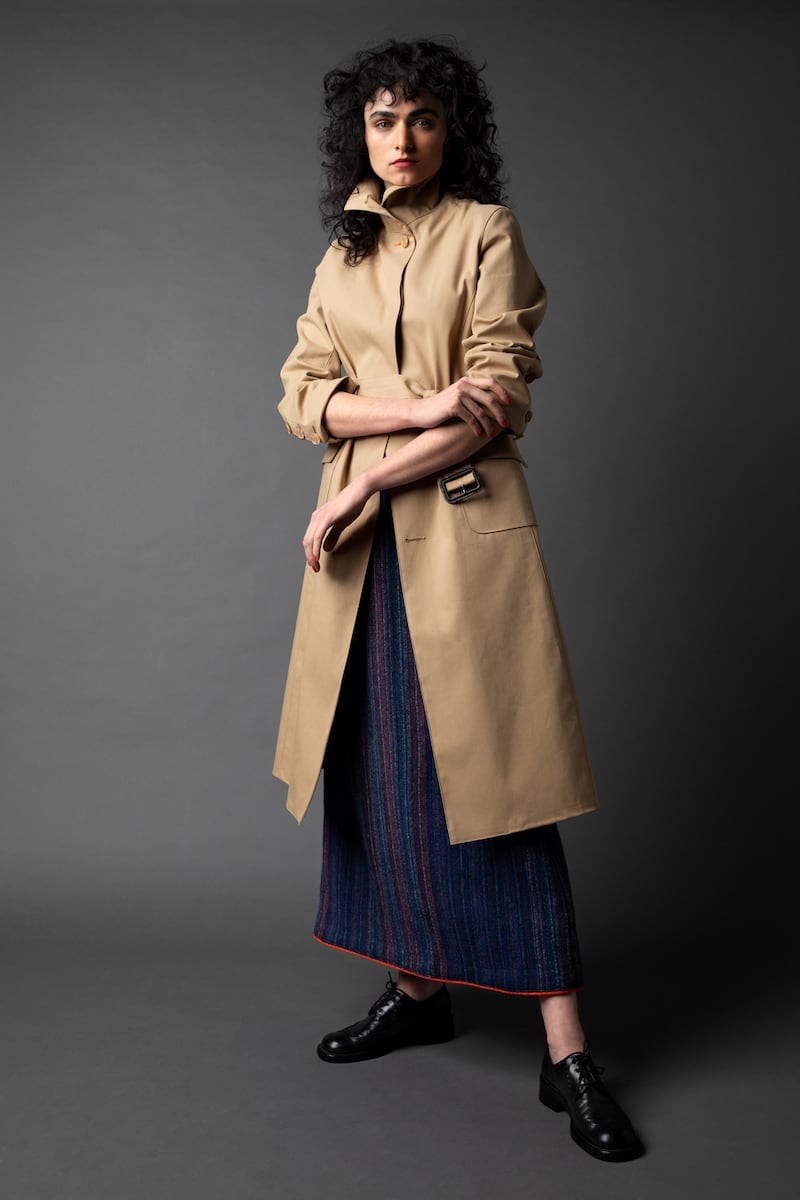
In 1973 she and Loughlin bought the 12th century Kilmainham Mills in Dublin, where every part of the process from the raw wool to the finished cloth was carried out on site. “And we were there for 25 years.” A year later she married the artist Patrick Pye and within nine months of moving into the mill, they bought the house in Piperstown where they raised their four children. Her parents moved into the cottage in the mill – “the mill was the family, and it was a joyful place and the fact that we were producing something that was traditional in the area meant a lot”, she says. Sadly, the business did not survive and the company was liquidated in 1982.
Today, she and her brother reminisce companionably about their days at Kilmainham. His technical knowledge is as impressive as hers, and he too has had an illustrious career as the founder of Concern with his wife Kay, as a management consultant, founder of WINI Technologies and the author of a book on the Vatican, but, as they say, sin scéal eile.
All skirts are made to order. Photography by Barry McCall, styling by Catherine Condell, hair and make-up by Leonard Daly. Model: Maria B. Shoes are stylist's own. All clothes and accessories from Stable, Westbury Mall, Dublin. stableofireland.com





